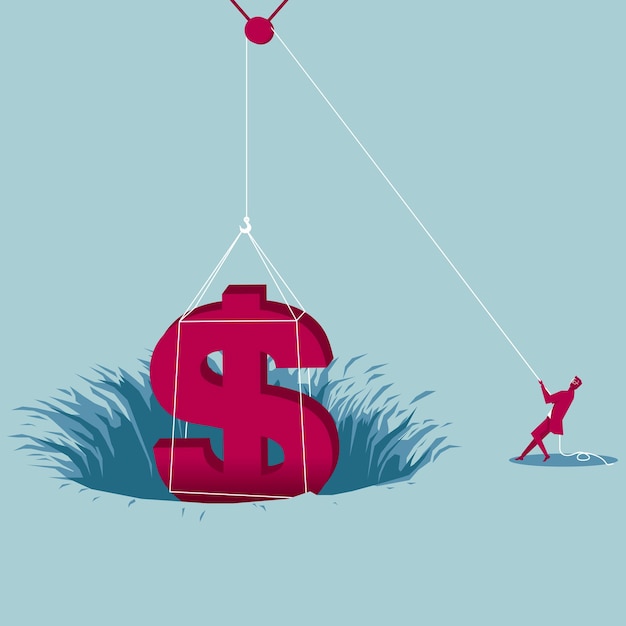Is Your Emergency Fund Enough? Calculate Essential Expenses

An emergency fund should cover 3-6 months of essential expenses such as housing, utilities, food, and transportation, providing a financial cushion for unexpected events like job loss or medical emergencies.
Is your emergency fund truly prepared to cushion you during life’s unexpected financial blows? Many people struggle to determine if their savings are sufficient. This article will guide you through calculating your essential expenses to ensure your emergency fund is enough to cover 3-6 months of necessities, providing financial security and peace of mind.
Understanding the Basics of an Emergency Fund
An emergency fund is a dedicated savings account designed to cover unexpected expenses, such as job loss, medical emergencies, or car repairs. It acts as a financial safety net, preventing you from accumulating debt or dipping into long-term investments during difficult times. Knowing that you have funds available can significantly reduce stress and provide a sense of security.
Why You Need an Emergency Fund
Life is unpredictable, and unexpected expenses can arise at any time. An emergency fund provides a buffer against these financial shocks, allowing you to handle them without disrupting your long-term financial goals.
- Job Loss: An emergency fund can cover living expenses while you search for a new job.
- Medical Emergencies: Unexpected medical bills can be substantial, and an emergency fund can help cover these costs.
- Home or Car Repairs: Repairs to your home or vehicle can be costly, and an emergency fund can help pay for these necessities.
Having an emergency fund is not just about covering expenses; it’s about having financial peace of mind. It allows you to make decisions without the pressure of immediate financial constraints.

Calculating Your Essential Monthly Expenses
The first step in determining if your emergency fund is sufficient is to calculate your essential monthly expenses. These are the costs required to maintain your basic standard of living. By knowing these expenses, you can accurately estimate how much money you need to save.
Identifying Essential Expenses
Essential expenses are those you cannot live without. They typically include housing, utilities, food, transportation, and healthcare. Distinguishing between needs and wants is crucial in this process.
- Housing: Rent or mortgage payments
- Utilities: Electricity, water, gas, and internet
- Food: Groceries and basic meals
Creating a detailed list of your monthly expenses can help you identify areas where you might be able to cut back if necessary. However, when calculating your emergency fund, focus on the bare minimum required to live.
Determining Your 3-6 Month Coverage Amount
The general recommendation is to have enough in your emergency fund to cover 3-6 months of essential expenses. The exact amount depends on your individual circumstances, such as job security, income stability, and risk tolerance. Understanding these factors will help you choose the right coverage period for your needs.
Factors to Consider
Several factors can influence how much you need in your emergency fund. Evaluating your financial situation and job security will help you determine the appropriate coverage period.
Consider these questions:
- Job Security: Are you in a stable industry with high demand for your skills?
- Income Stability: Do you have a consistent income, or does it fluctuate?
- Health: Do you have any chronic health conditions that may require frequent medical care?
If you are in a stable job with a consistent income and good health, a 3-month emergency fund may be sufficient. However, if you are in a less stable industry or have fluctuating income, a 6-month fund is recommended.

Practical Steps to Build Your Emergency Fund
Building an emergency fund may seem daunting, but it is achievable with a strategic approach. Setting realistic goals, automating savings, and making gradual progress are key to success. Start small and consistently contribute to your fund until you reach your desired amount.
Setting Realistic Savings Goals
Start by setting a small, achievable savings goal. This will provide motivation and build momentum as you work towards your larger goal. Break down your savings target into manageable monthly contributions.
Automating Your Savings
Automate recurring transfers from your checking account to your emergency fund. This ensures consistent savings without requiring constant effort. Many banks offer automatic transfer options.
- Set It and Forget It: Automate the process so you don’t have to think about it.
- Start Small: Begin with a smaller amount and gradually increase it over time.
- Adjust as Needed: Review your savings plan regularly and adjust as necessary.
Building an emergency fund is a marathon, not a sprint. Consistency is more important than saving large sums of money sporadically.
Where to Keep Your Emergency Fund
The ideal place to keep your emergency fund is in a safe, liquid account that is easily accessible. High-yield savings accounts and money market accounts are popular options. These accounts offer competitive interest rates while allowing you to withdraw funds quickly when needed.
High-Yield Savings Accounts
High-yield savings accounts offer higher interest rates compared to traditional savings accounts. They are typically FDIC-insured, providing security for your funds.
Money Market Accounts
Money market accounts are similar to savings accounts but may offer additional benefits, such as check-writing privileges. They also tend to have higher minimum balance requirements.
- Accessibility: Choose an account that allows you to easily withdraw funds when needed.
- Interest Rates: Look for competitive interest rates to maximize your earnings.
- FDIC Insurance: Ensure your account is FDIC-insured for added security.
Avoid investing your emergency fund in volatile assets, such as stocks or bonds. The goal is to preserve capital and have quick access to your funds when an emergency arises.
Adjusting Your Emergency Fund Over Time
As your life circumstances change, it’s important to review and adjust your emergency fund accordingly. Factors such as changes in income, job security, or family size may warrant adjustments to your savings goals. Regularly assessing your financial needs will ensure your emergency fund remains adequate.
Reviewing Your Financial Situation
Annually review your financial situation to determine if adjustments to your emergency fund are necessary. Consider changes in your income, expenses, and overall financial goals.
- Income Changes: If your income increases, consider increasing your emergency fund contributions.
- Expense Changes: If your expenses increase, you may need to increase your emergency fund to cover the additional costs.
- Life Events: Marriage, children, or a new home may require adjustments to your savings strategy.
Remember, an emergency fund is not a one-time savings goal. It’s a continuous process of building and maintaining financial security. Regularly review and adjust your fund to meet your evolving needs.
| Key Point | Brief Description |
|---|---|
| 💰 Emergency Fund | Covers unexpected expenses like job loss or medical bills. |
| 📊 Essential Expenses | Housing, utilities, food, and transportation costs needed for basic living. |
| 🎯 3-6 Months Coverage | Target savings equal to 3-6 months of essential expenses. |
| 🏦 High-Yield Account | Keep funds in a safe, liquid account with competitive interest. |
Frequently Asked Questions
▼
Ideally, you should aim to have 3-6 months’ worth of essential living expenses saved in your emergency fund to cover unexpected financial setbacks.
▼
Essential expenses include housing (rent or mortgage), utilities, food, transportation, and healthcare costs that are necessary for sustaining your basic standard of living.
▼
It’s best to keep your emergency fund in a high-yield savings account or a money market account that is easily accessible and FDIC-insured for security.
▼
You should review your emergency fund at least annually, or whenever there are significant changes in your income, expenses, or overall financial situation.
▼
If you use your emergency fund, make it a priority to replenish it as soon as possible by adjusting your budget and setting aside funds each month until you reach your goal.
Conclusion
Building an adequate emergency fund is a critical step towards financial security. By accurately calculating your essential expenses and consistently saving, you can create a safety net to protect you from life’s unexpected challenges. Regularly reviewing and adjusting your fund ensures that it remains an effective tool for managing financial emergencies and maintaining peace of mind.





